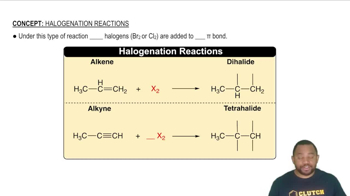Here are the essential concepts you must grasp in order to answer the question correctly.
Electron Affinity
Electron affinity is the amount of energy released when an electron is added to a neutral atom in the gas phase. A more negative electron affinity indicates a greater tendency for an atom to gain an electron, which is crucial for understanding the reactivity of elements, particularly in forming anions.
Recommended video:
Trends in the Periodic Table
Periodic trends refer to the predictable patterns observed in the properties of elements as you move across or down the periodic table. For electron affinity, it generally increases (becomes more negative) from left to right across a period and decreases down a group, which helps in comparing elements like sodium (Na) and chlorine (Cl).
Recommended video:
Comparison of Alkali Metals and Halogens
Alkali metals, such as sodium, have low electron affinities because they prefer to lose an electron to achieve a stable electron configuration. In contrast, halogens like chlorine have high electron affinities, as they are one electron short of a full outer shell and readily gain an electron, making their electron affinity more negative than that of alkali metals.
Recommended video:
 McMurry 8th Edition
McMurry 8th Edition Ch.6 - Ionic Compounds: Periodic Trends and Bonding Theory
Ch.6 - Ionic Compounds: Periodic Trends and Bonding Theory Problem 68
Problem 68 Verified step by step guidance
Verified step by step guidance

